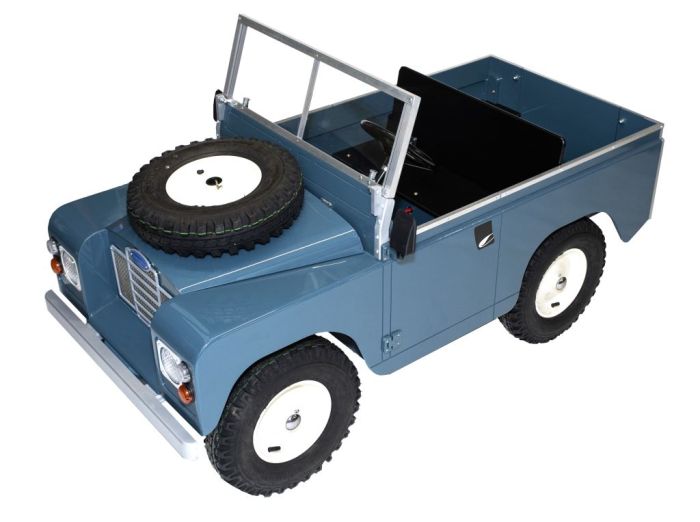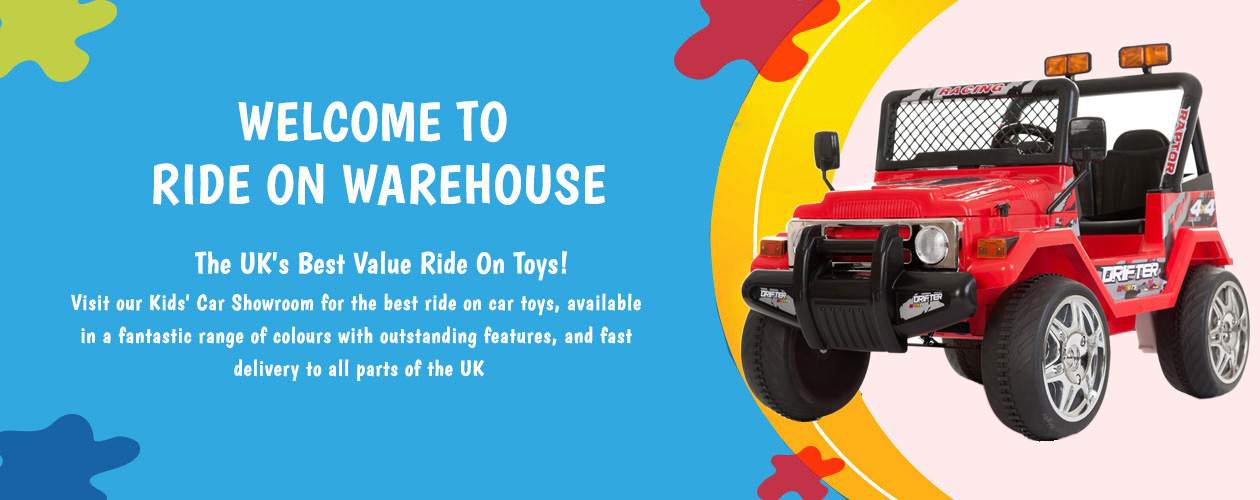Best Facts On Deciding On Kids Ride On Cars
Wiki Article
What Should You Be Looking At When Selecting The Right Ride-On Vehicle For Your Older Children?
When considering ride-on cars for children, it is essential to take into account the age, size, and stage of development to ensure that the vehicle is safe, appropriate and fun for them. Be aware of these things:
Younger Toddlers (1 to 3 years old) Consider riding-on vehicles specifically designed for this age group. These cars usually have the appearance of a stable, low-profile design and easy-to-use controls. They are also typically equipped with basic features, like steering wheel, buttons, or handles. Pick cars that have large bases for greater stability.
Children who are older (3plus years) - As your child ages, he or she will be able to use more advanced vehicles with additional options and control. Consider cars with adjustable seat, larger weight capacity, and more interactive features such as lights, sounds or music. Look for ride-ons that allow you to change the speed or parental controls to guarantee safety and allow for various levels of ability.
Size
Height and weight - Take your child's height and weight into consideration when selecting a ride-on car. Choose a ride-on car with a seat that fits your child's height and weight. Avoid cars too big or small. They could cause discomfort and even danger.
Legroom and Comfort - Ensure that the car you ride in has ample legroom as well as space for your child to sit comfortably. The size of the seating space should be appropriate for the height and size of your child.
Developmental Stage
Motor Skills: When choosing a ride-on vehicle make sure you consider your child's ability to coordinate and their motor skills. While infants and toddlers may require simpler controls to maneuver the car, older kids are able to manage more complicated controls and interactive features.
Independence and Confidence Ride-on vehicles can foster independence and confidence for children as they learn to navigate and control their own vehicle. Choose a vehicle that allows your child to learn how to steer, accelerate and brake independently. This will build their confidence and motor skills as they progress.
Interest and Engagement - Take into account your child's interests and preferences when selecting the best ride-on car for them. Choose a theme, color, or feature that will draw your child's attention. It could be an old-fashioned car or sports car that has an interesting character, a pickup truck, or a classic car.
When you take into account the age of your child as well as their height and developmental stage, you will be able to choose a safe, comfortable ride that your child can enjoy and learn from. View the most popular ride on toys for more tips including toy car, car for toy, race car toy car, electric ride on, pedal car, digger ride, childrens ride on, ride on car, childrens digger, childrens digger and more. .

What Are The Indoor And Outdoor Models Of Children's Cars Made?
These vehicles have been developed with particular features and attributes that are specifically tailored to the specific environment and usage scenario, whether either outdoors or indoors. These models are designed differently - Indoor Use Cars
Dimension and weight Cars designed that are designed for indoor use tend to be smaller and lighter and can be more comfortable in tight areas like hallways, living rooms or playrooms. They are compact enough to fit into narrow spaces, tight corners and also avoid damaging walls and furniture.
Low Ground Coverage – Cars that are designed for indoor use have a very low ground cover to prevent them from becoming stuck or caught against obstacles like carpets or thresholds. This allows for seamless and uninterrupted movement over indoor surfaces without fear of becoming stuck or falling over.
Smooth Wheels The wheels of the inside of cars are made from smooth materials like plastic or rubber. This gives stability and grip on smooth surfaces, such as flooring made of hardwood, laminate floors, or tiles. They are engineered with a minimum of sound to reduce scratching and scratching on indoor surfaces.
The limited speed of cars used to be used indoors usually have lower maximum speed to ensure controlled and safe operation within restricted areas. This prevents accidents and collisions with walls, furniture or any other obstacles that are commonly encountered in indoor areas.
Outdoor Use Cars -
Durable Construction: Vehicles made for outdoor use have robust materials such as tough plastic or metal that can withstand rough handling, outdoor elements, such as moisture and sun. They are less prone to be afflicted by tear and wear caused by exposure to outdoor elements.
Greater Ground Clearance: Outdoor use vehicles have a higher level of ground clearance to navigate bumps and uneven terrain in the outdoors. This enables them to maneuver over rough surfaces like gravel, grass or dirt without becoming trapped or damaged.
Traction Tires These are the tires on vehicles used for outdoor use are often fitted with treads, or patterns that enhance grip and traction while driving over uneven or slippery surfaces. This ensures stability and control on the outdoors to avoid sliding or skiing.
Weather-resistant components - Cars intended for outdoor use might include weather-resistant components like electronic components that are sealed, waterproof casings or rust resistant materials. These elements safeguard the car from moisture and environmental damage. This permits the vehicle to be exposed to rain, mud or puddles and still be able to perform.
Higher Speeds - Cars for outdoor use usually come with higher top speeds in order to be able to handle large spaces and longer distances that are common in outdoor environments. This allows children to experience an exciting and thrilling experience when out in the open.
Parents can select a car for their children that meets their needs, indoors or outside, by taking into consideration the design and features. This will provide a fun, safe and long-lasting experience for children. Have a look at the top discover more about Audi ride on car for blog advice including ride electric car, kidscars, 2 seater electric cars, childrens electric ride on, riding digger, cars pedal car, race car toy car, toy a car, toy car toy car, car on ride and more. .

What Kind Of Children's Remote Control Cars Are Available? What Are Their Pros And Cons?
The various sizes, styles, prices, and types of children's cars with remote controls can be found to suit the needs and budgets of everyone. This article provides an overview of types, sizes and prices of children's remote controlled cars, along with their pros and cons.
Electric RC Cars – Remote-controlled cars powered by batteries that are suitable for use indoors or outdoors. The cars are available in different styles such as trucks or buggies.
Nitro RC Cars : Gas-powered vehicles that operate remotely and offer higher performance, but also require more maintenance. They're typically bigger and cost more than electric RC vehicles.
Scale Models: Remotely controlled replicas that include real vehicles like cars, trucks, planes and boats. Scale models come in different sizes, from 1 10 to 1-24 With larger scales offering more details and authenticity.
Sizes -
The dimensions of remote-controlled cars for children range from tiny miniature versions to larger-scale replicas. The size of the vehicle has an impact on its speed, performance and handling qualities.
Smaller cars, which are lightweight and compact, are great to be used indoors or by younger children. Larger-scale models have greater power and durability, making them ideal for outdoor racing and off-road driving.
Prices
Prices vary based on dimensions, features and build quality.
Electric and Nitro RC cars on a larger scale may cost between $100 and $500.
Scale models, top-quality hobby RCs can cost anywhere from a few hundred dollars to over a $1,000 depending on the quality of the model and performance.
Pros and Cons
Pros -
Entertainment - Remote control for children's automobiles can bring hours of entertainment and excitement for children and adults alike.
Skills Development The use of RC vehicles aids in the development of hand-eye coordination, spatial awareness and problem-solving skills.
Social Interaction RC cars can be played by friends and families, encouraging social interaction and cooperation.
Customization - A lot of RC cars can be modified with aftermarket parts or upgrades to boost performance and aesthetics.
Cons
Cost – A remote-controlled car for kids with the latest features or hobby grade models can be expensive.
Learning Curve: Operating an RC vehicle requires a lot of practice and skill, and even younger youngsters may be unable to master the controls at first.
Maintenance: All RC vehicles require regular maintenance that includes cleaning, oiling, and occasionally replacing parts or repairs.
Safety Concerns – RC safety of cars can be impacted through electrical hazards, collisions, and other dangers when the vehicles aren't operated with care and supervision from an adult.
Overall, remote control children's cars offer a thrilling as well as educational experience for children of all ages, but it's essential to consider things like dimensions, cost features, and safety when selecting the best car for your child. Hobby-grade RCs may be suitable for older kids and enthusiasts while simpler models will suit younger children and beginners. Follow the most popular Audi kids car kidscars.co.uk info for website examples including toy toy cars, 2 seater electric cars, lambo toy car, ride ons, toy a car, electric car ride, ride on digger, riding digger, electric rideons, ride electric car and more. .
